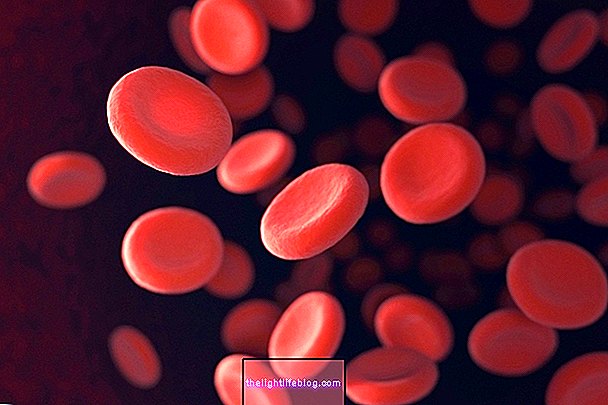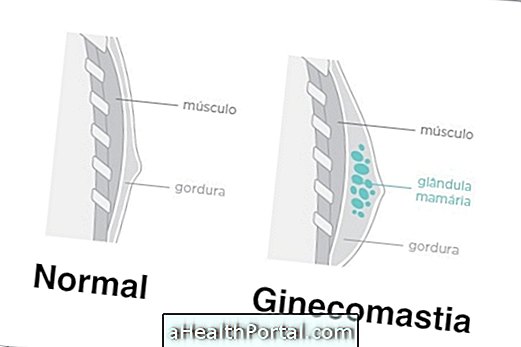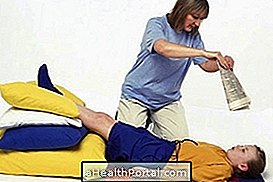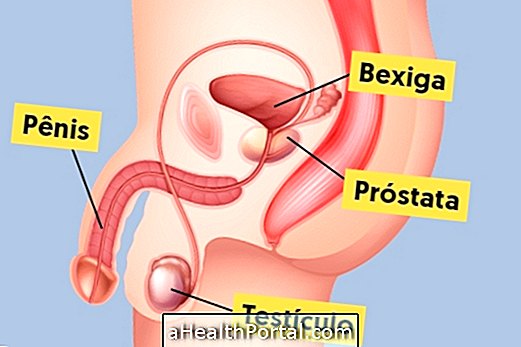Achilles tendon rupture can happen to anyone but it especially affects practicing men in their 20s and 40s due to occasional sports. The activities where this happens most are soccer games, handball, gymnastics, athletics, volleyball, cycling, basketball, tennis or any activity that needs to be skipped.
The Achilles tendon, or tendon of the calcaneus, is a structure that is about 15 cm long, which connects the calf muscles to the underside of the heel. When this tendon is ruptured, the symptoms may soon be noticed.
The rupture can be total or partial, varying from 3 to 6 cm. In the case of partial ruptures there is no need to perform surgery, but physiotherapy is indispensable. In cases of total rupture, it is necessary to perform surgery followed by a few weeks of physiotherapy for complete recovery.
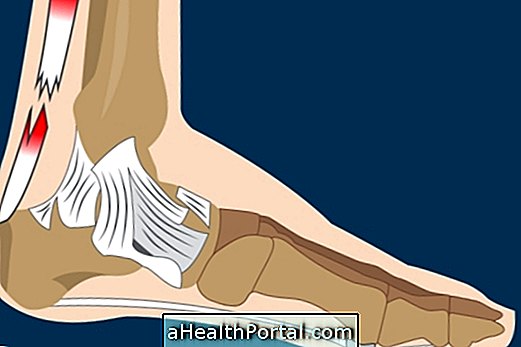
Signs and symptoms
The signs and symptoms of tendon rupture are usually:
- Pain in the calf with intense difficulty to walk;
- When palpating the tendon it may be possible to observe its discontinuity;
- Usually the person reports that they heard a click at the moment the tendon ruptured;
- Often the person thinks someone or something hit his leg.
In case of suspected Achilles tendon rupture the doctor or physiotherapist can do a test that can demonstrate that the tendon has been ruptured. For the test the person should lie on their belly down and with a knee bent. The physiotherapist will press the 'potato muscle' and if the tendon is intact the foot should move, but if it is broken, there should be no movement. It is important to do this test with both legs in order to compare the results; if it is not possible to identify the rupture, you can request an ultrasound examination.
If it is not tendon rupture it can be another alteration like muscle strain, for example.
Causes of Achilles tendon rupture
The most common causes of Achilles tendon rupture are:
- Excess training;
- Return to intensive training after a rest period;
- Runs on slopes or mountains;
- Wearing high heel shoes daily may favor;
- Activities with jumps.
People who do not practice physical activity can have a break when starting a fast race, to take the bus, for example.
How is the treatment done?
Usually the treatment is done with immobilization of the foot, being the option of choice for people who are not athletes, but for these the doctor can indicate the surgery to join the fibers of the tendon again.
Immobilization can last for about 12 weeks and also happens after surgery. In one case, as in the other, physiotherapy is indicated for the person to put the weight of the body on the foot again and then to return walking normally, returning their activities and training. Athletes generally recover faster in about 6 months of treatment since the break, but who is not an athlete can take longer. Learn more about treatment for Achilles tendon rupture.







